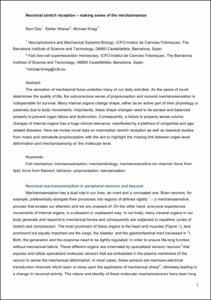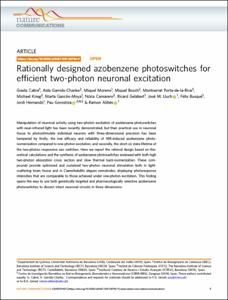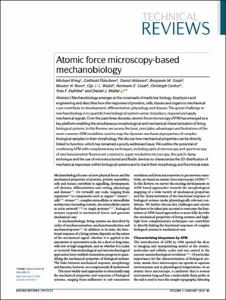Articles de revista
Enviaments recents
-
Neuronal stretch reception – making sense of the mechanosense

(Elsevier, 2019-05-01)
(Elsevier, 2019-05-01)
Article
Accés obertThe sensation of mechanical force underlies many of our daily activities. As the sense of touch determines the quality of life, the subconscious sense of proprioception and visceral mechanosensation is indispensible for ... -
Rationally designed azobenzene photoswitches for efficient two-photon neuronal excitation

(Nature, 2019-02-22)
(Nature, 2019-02-22)
Article
Accés obertManipulation of neuronal activity using two-photon excitation of azobenzene photoswitches with near-infrared light has been recently demonstrated, but their practical use in neuronal tissue to photostimulate individual ... -
Direction Selectivity in Drosophila Proprioceptors Requires the Mechanosensory Channel Tmc

(Sciencedirect, 2019-03-01)
(Sciencedirect, 2019-03-01)
Article
Accés obertDrosophila Transmembrane channel-like (Tmc) is a protein that functions in larval proprioception. The closely related TMC1 protein is required for mammalian hearing and is a pore-forming subunit of the hair cell ... -
Atomic force microscopy-based mechanobiology

(Nature, 2018-11-01)
(Nature, 2018-11-01)
Article
Accés obertMechanobiology emerges at the crossroads of medicine, biology, biophysics and engineering and describes how the responses of proteins, cells, tissues and organs to mechanical cues contribute to development, differentiation, ...





